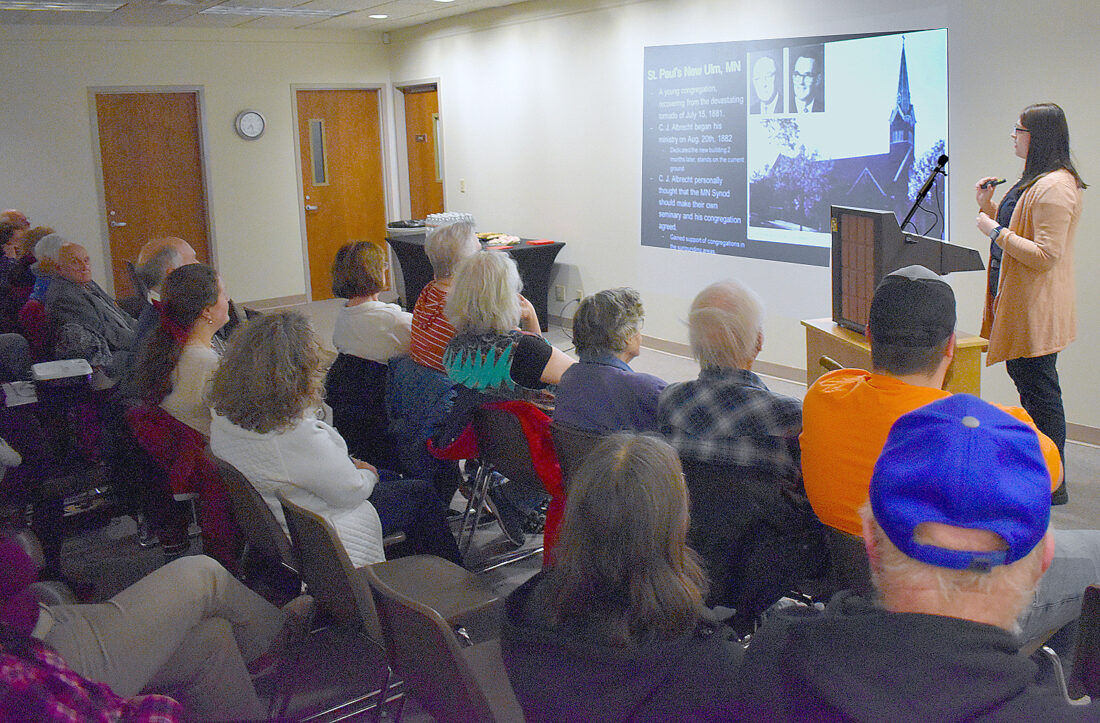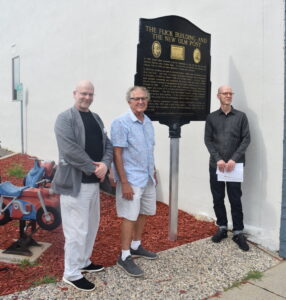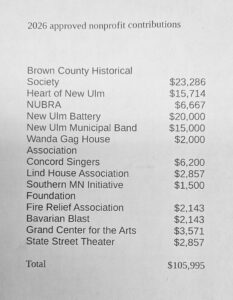Historical society kicks off season with Gilded Age

Staff photo by Clay Schuldt Emma Holzen, Martin Luther College student, gives a presentation on the founding of Dr. Martin Luther College (DMLC) as the second part in the “Gilded Age” history talk hosted by Brown County Historical Society.
NEW ULM — The Brown County Historical Society (BCHS) kicked off its 2023 historical programming season Thursday with a series of three bite-size history lessons from New Ulm’s Gilded Age.
The Gilded Age was the period from 1870-1920 in the United States and was a time of tremendous growth in Brown County. BCHS partnered with Martin Luther College (MLC) to present on local topics from this time period. Three MLC students gave 15-minute presentations.
Saturday’s edition of The Journal featured the first presentation in this series, that covered the tornado of 1881. The second presentation was from Emma Holzen on the founding of Dr. Martin Luther College (DMLC).
The Founding of Dr. Martin Luther College
Holzen said that to understand how DMLC was built in New Ulm it was necessary to understand why a seminary was needed in Minnesota.
The school’s founding was connected to a partnership between the Minnesota Lutheran Synod and the Wisconsin Lutheran Synod. The Minnesota Synod wanted to train more pastors, but there was no seminary in Minnesota and it was not well off financially.
Wisconsin built a seminary in Watertown in 1863. The two synods agreed to allow Minnesota pastors-in-training to learn at the Watertown seminary.
Holzen said the problem was the distance. Watertown, WI was a long drive and there were few train routes. Many young men in Minnesota were unwilling to travel to Wisconsin to become a pastor. Others decided to become a pastor in nondenominational churches. The ones who did travel to
Watertown sometimes stayed in Wisconsin rather than coming back to Minnesota.
A grasshopper plague from 1873 to 1874 in Minnesota led to financial ruin for some congregations. The Minnesota Synod gave extra funds to local congregations rather than support the Wisconsin seminary, leading to financial debt between the two. Compounding the problem, the two synods began to differ on church doctrine, ending the partnership.
Around this time, St. Paul’s Church in New Ulm was destroyed by the 1881 tornado, forcing them to rebuild from scratch. During the rebuild, the pastor died. A new pastor, C.J. Albrecht, was called to serve in New Ulm. He took over as pastor in August 1882 and the new St. Paul’s Church was dedicated soon after.
Albrecht believed Minnesota should have a seminary and convinced his New Ulm congregation of these needs. Albrecht would become the president of the Minnesota Synod a year later.
In 1883, during a synod conference, he gave a report proposing a new seminary be built in Minnesota and New Ulm’s congregation had pledged $4,000 and provided land to create a college — not a seminary. The college would be more beneficial to the congregation. Pastors could still be trained, but other degrees could be offered.
The Minnesota Synod wanted to wait to build the college until $14,000 was pledged, but St. Paul’s in New Ulm had already started building before the synod voted to approve New Ulm as the site. Fortunately, a St. Paul’s congregation member sold the land for the college for $100.
In July 1884, the cornerstone of DLMC was laid. A big celebration was
held to open the school
Nov. 12, 1884. Lutherans from across the state came to celebrate the event. It was the largest celebration in New Ulm up to that point.
Three years after DMLC opened, the college began training teachers and it continues as a teaching college to this day. DMLC lost its “doctor” title in 1995
after the Minnesota and Wisconsin synods came together, combining schools. At this point, DMLC became MLC.
The next article in this series will cover a presentation by Joel Holz on the struggle to build the New Ulm Armory.






